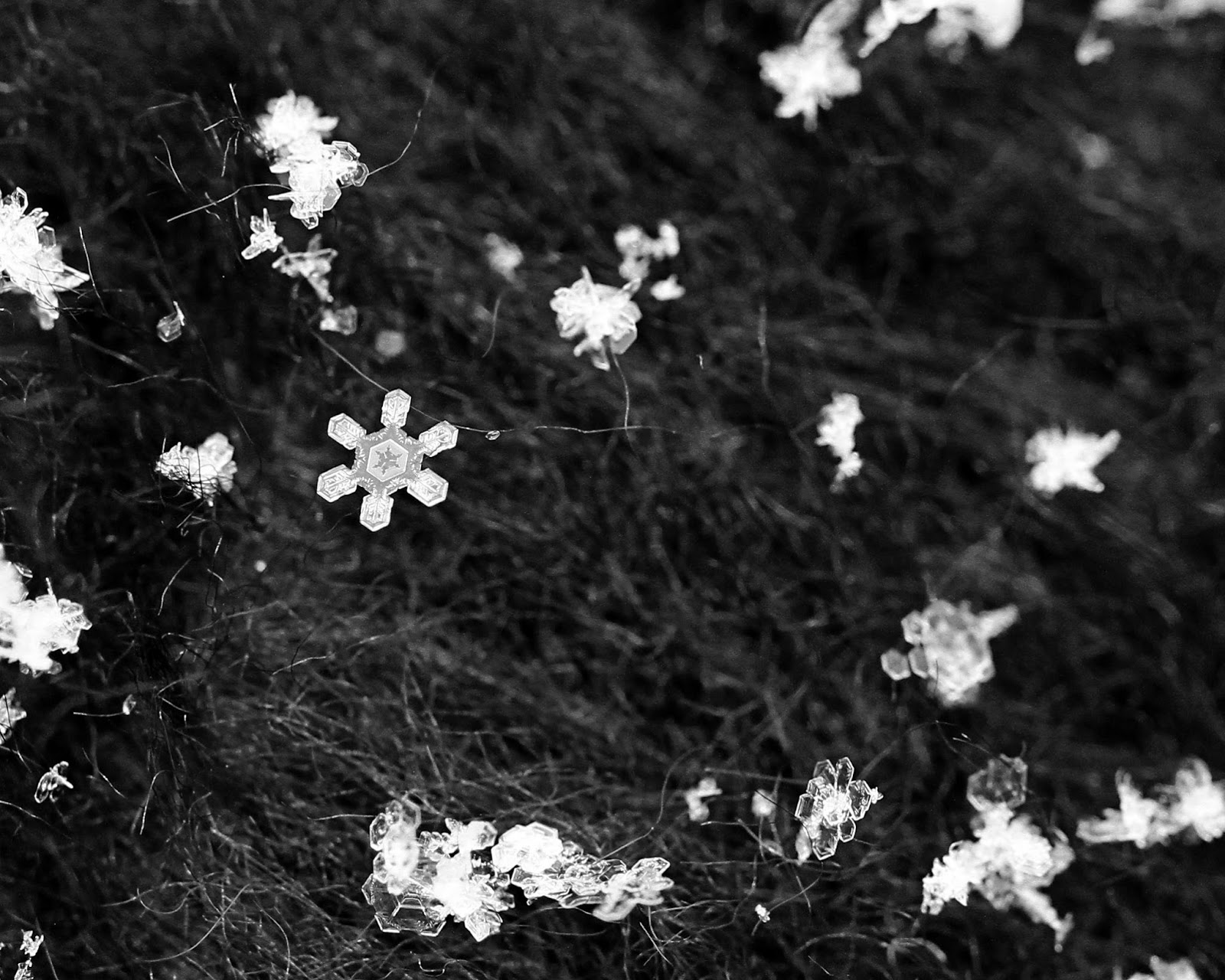We had some snow this week and it was the fluffy kind...the kind they really love at the ski resorts but also the kind that we rarely get here in the Mid Atlantic. I have learned that this type of snow is often called Champagne Powder. The scientific name of this type of flake is called a Dendritic which means "tree-like". Really nicely formed Dendrites are plate-like snow crystals that have branches and side-branches.
I ventured out with my 100mm macro lens, a really warm coat and boots and my tripod, to try and capture these miraculous little crystals. I threw a black scarf on my deck rail and waited a minute or two. The great thing was that the temperature kept the flakes from melting and the there was almost no wind, they stayed put for me. Granted, even the lightest touch of wind caused the fakes to move, and any movement at that magnification will cause a problem.
Did you know that even the pros can't take a shot that has the flake in focus from front to back? Unless you get the flake to lay flat and you can shoot directly downward and not move your camera, you aren't gonna make it happen. I am definitely still learning about all aspects of photography and so I don't really understand all of the techniques that can be used to capture the perfect snowflake image. Some people turn lenses around backward and tape them to the camera to create a macro technique. Some set up a piece of glass and rest the camera, lens facing down, and shoot through to the snow flakes that they have placed under the glass. Lots of ways to do it, I suppose.
I do know that when you see an image that is perfectly focused across the entire flake, and it includes beautiful prism colors and crisp detail with no visible fibers from the background item used to catch the flake, the photographer has done some tricks in his photo processing software. Often 30-40 images are taken of the same snowflake, with the camera at every possible slightly different angle and then combined and layered so that all of the flake is in focus, or appears to be in the final product. Then all of the background fibers are erased from the file so the flake seems to be perfectly framed on a black background.
Now don't get me wrong...I love to see those images of snowflakes, no matter how the artist arrived at this final product. I appreciate the hours spent doing this magic because it gives us a chance to see something God created..something from the part of world that is invisible to the naked eye. That's cool! No matter the process, it is art. It's beautiful and magical. It was so interesting to test my ability and equipment to see if I could produce something beautiful. I loved opening my images and scanning the frame and finding all the lovely shapes!
Every snowflake is unique, but they are grouped in families based on conditions like temperature and moisture when they form, and there are lots of similarities within the families. The chart at the bottom of this post is pretty "cool", so check it out.
Here are the images I captured. Not perfect, but I feel pretty happy with what I was able to do! No extensive editing was done. Just pumped up the contrast and sharpened a bit. I love the mystical aspect of these pictures...like I was peeking inside another world. Well, I guess I kind of was.











No comments:
Post a Comment